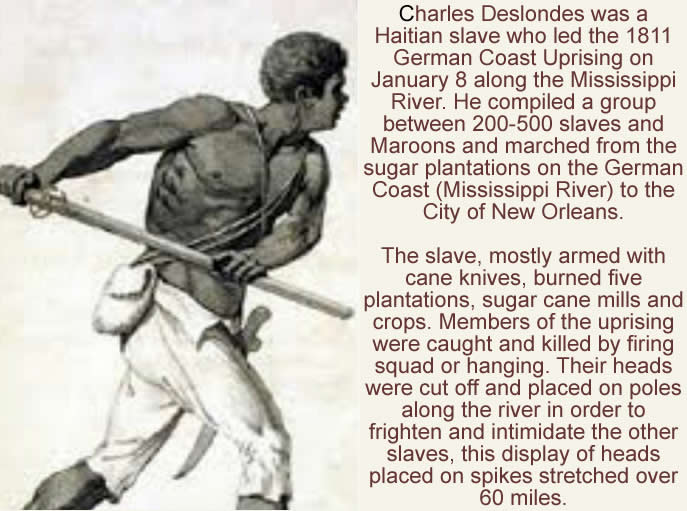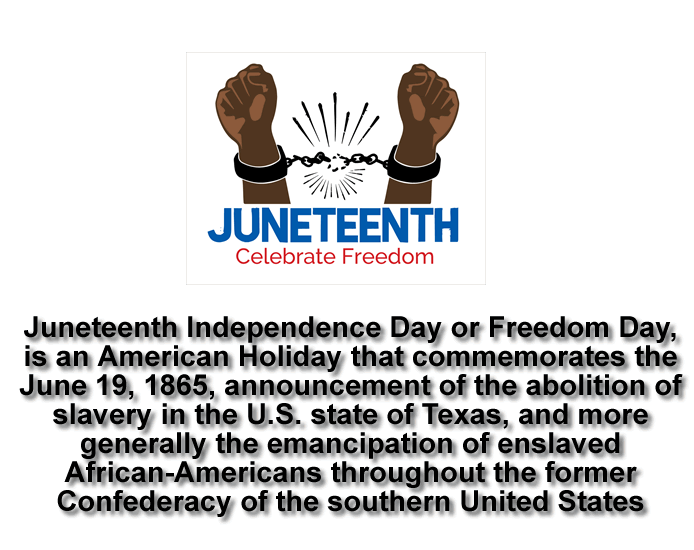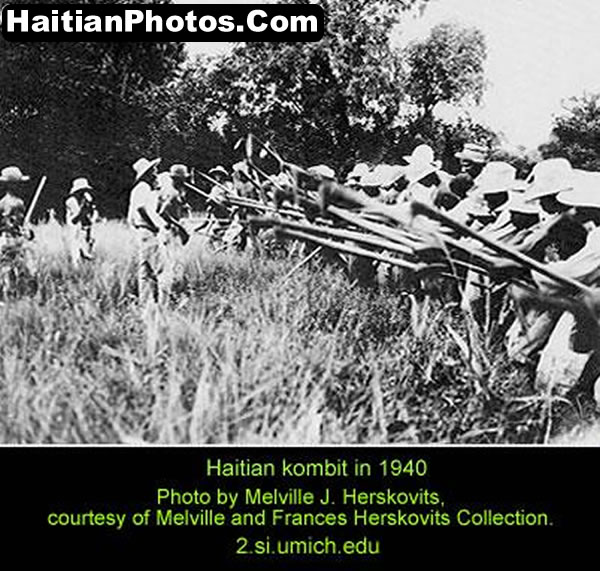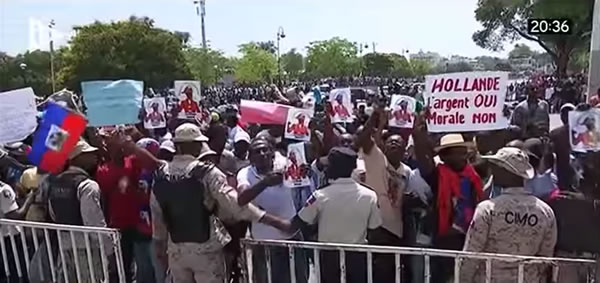ADVERTISEMENT
slavery
Charles Deslondes, a Haitian slave who led the 1811 German Coast Uprising to New Orleans
Charles Deslondes was a Haitian slave who led the 1811 German Coast Uprising on January 8 along the Mississippi River. He compiled a group between 200-500 slaves and Maroons and marched from the sugar plantations on the German Coast (Mississippi River) to the City of New Orleans.
The slave, mostly armed with cane knives, burned five plantations, sugar cane mills and crops. Members of the uprising were caught and killed by firing squad or hanging. Their heads were cut off and placed on poles along the river in order to frighten and intimidate the other slaves, this display of heads placed on spikes stretched over 60 miles.
Charles Deslondes was born as a slave in Saint-Domingue, present-day Haiti; he was the son of an enslaved woman and a French planter. Deslondes was one of the slaves who led the 1811 German Coast uprising, a revolt of black slaves in parts of the Territory of Orleans on January 8-10, 1811. It was the largest slave uprising in U.S history that killed only two white men. The rebellion began on a cold, rainy night on January 8, 1811, on or near the plantation of Colonel Manuel André, 36 miles northwest of New Orleans near present-day Norco. The insurgent slaves of Andre, between 64 and 125 from sugar plantation, surrounded his house on the night of January 8; they broke in, assaulted and wounded Colonel André, murdered his son Gilbert (a member of plant militia), and then fled downriver in the direction of New Orleans. The rebels, led by Deslondes, proceeded south, torching and looting adjacent plantations and adding about five hundred recruits to their ranks. They rallied to fight and die for freedom.
Andre, however, managed to escape across the Mississippi and began to round up a posse of nearby planters.
The 1811 German Coast uprising began on the land known as early Louisiana's German Coast (named for immigrants in the 1720s, located above New Orleans on the Mississippi River) where the Germans became independent land-owners. Maroons were the African slaves who escaped from slavery in the Americas and mixed with the indigenous peoples of the Americas and formed independent settlements.
During the uprising, the slaves armed with cane knives burned five plantations, sugarcane mills, and crops. The revolt was well planned-- a fundamental challenge to the system of plantation slavery. The rebels were dressed in military uniforms and chanting "On to New Orleans, they rallied with an attempt to conquer the city, kill all its white inhabitants, and establish a black republic on the shores of the Mississippi. Very soon they met the twin forces of the American military and a hastily assembled planter militia. The slaves' ammunition did not last long, and the battle was brief. Soon the slave defense was broken and plant militia began their slaughter. Immediately about 40 to 45 slaves were killed, 14 slaves were executed and over the following weeks, an additional 44 slaves were killed.
Juneteenth Independence Day or Freedom Day
Juneteenth is an American holiday that commemorates June 19, 1865, announcement of the abolition of slavery in the U.S. It is called Independence Day or Freedom Day. This was the day recognized as the emancipation of enslaved African-Americans throughout the former Confederacy of the southern United States.
President Abraham Lincoln issued the Emancipation Proclamation on September 22, 1862, during the American Civil War, declaring that all enslaved people in the Confederate States of America in rebellion and not in Union hands were to be freed. The States that were not part of this agreement included: Kentucky, Maryland, Delaware, Missouri, West Virginia, the state of Tennessee, lower Louisiana, and Southeast Virginia.
The newly free slaves soon learned that their fight for freedom did not end with the Emancipation Proclamation. In the early 20th century, economic and political power led to a decline in Juneteenth. Later, between 1890 and 1908, all former Confederate states passed new constitutions or amendments that effectively disenfranchised black people and excluded them from the political process. It was during this period that the White-dominated state legislatures passed Jim Crow laws imposing second-class status. Then came the Great Depression that made many black people to leave the farms and to look toward the major cities in search of work. The Second Great Migration of Black Americans started during World War II, when many black people migrated to the West Coast where there were many job openings in the defense industry.
UN pays tribute to heroes of abolition of Slave trade
Over 15 million men, women and children were the victims of the transatlantic slave trade,
Every year on 25 March, on the International Day of Remembrance for the Victims of Slavery, we get opportunity to honour and remember those who suffered and died at the hands of the brutal slavery system. For over 400 years, more than 15 million men, women and children were victims of this tragic practice. August 23 of each year, has been designated by UNESCO to memorialize the 'transatlantic slave trade' which took place across the Atlantic Ocean from the 15th through 19th centuries. It is also is the day of observance for International Day for the Remembrance of the Slave Trade and its Abolition. August 23 is also a memorable day on Haitian calendar, because during the night of August 22 to August 23, 1791, on the island of Saint Domingue (now known as Haiti), an uprising began which later became a major factor in the abolition of the transatlantic slave trade.
Haitian Kombit, a method of working the land
This is a farming method that was popular during the slavery period in Saint Domingue, now known as Haiti. What is exactly the Haitian Kombit? It was the perfected method of working the land during slavery, It is called a rotating cooperative approach to planting and harvesting. This method is still being used in many regions in Haiti today
New Toussaint Louverture statue in La Rochelle, France
To publicly recognize Toussaint Louverture as one of the first in the fight to abolish slavery a statue was unveiled in his honor at the Museum of the New World of La Rochelle France. The city of La Rochelle played a very important role during the period of slavery. This great leader fought until his death for the abolition of slavery.
On Wednesday, May 20th, in the presence of the Mayor of La Rochelle, the Senegalese sculptor Ousmane Sow and a Haitian official delegation, a statue of Haitian revolutionary and a leader of independence, Toussaint Louverture (1743-1803) has been unveiled in the courtyard of the Museum of the New World of La Rochelle France. Toussaint Louverture (nicknamed The Black Napoleon) was a former slave, in 1801, promulgated an autonomist constitution for the colony, with himself as governor for life. But in the next year he was forced to resign by forces sent by Napoleon Bonaparte. The 2.80 meter high bronze statue in the costume of governor of the French Republic of Santo Domingo, is a tribute to him for abolishing slavery in the country. Toussaint Louverture died in 1803 in a cell in Fort de Joux (Doubs, Savoie).
Francois Hollande Haiti and restitution for independence debt
Here is a view of a group of Haitians who were not so happy with the visit of Francois Hollande in Haiti in May, 2015.
French President says No to Reparations for Haiti
French President Hollande made a visit to Haiti recently. President Martelly glossed over France's unwillingness to pay reparations, readily accepting the $145 million in infrastructure projects from them.
Protestors are frustrated Hollande, like other presidents of France, say it owes ". . . only . . . a moral debt . . . not financial compensation."
France forced Haiti to pay $21 billion for an "independence debt" to guarantee its freedom in 1804.
Jean-Pierre Boyer and American black migration
During the 1820s, six thousand black Americans were taken to Haiti as part of a migration scheme in which President Jean-Pierre Boyer had a heavy hand. It followed Haiti's establishment as a free black state and was an open invitation for black Americans to find freedom from slavery in Haiti. Many think the plan failed, but for different reasons, one was that thousands returned to the U.S., and the other was because the expectations of the prospect weren't considered met.
Haiti The Cereminy Of Bois Caiman - A Haitian History
Here is a picture the ceremonie of Bois caiman. It is an intricate part of our fight for our independence. Some people feel that it was a voodoo ceremony and should not be included in our history
The Haitian revolution revers the entire cource of the world. The complicity of Frence and the United States after Haiti fought for his independence
Haiti The Poorest Country In The Hemisphere By Design - A Haitian History
Here is a picture representing the freedom Haiti took from France. That is when the Haitians declared themselves free from the French colonization
Although we are still paying the price for who we are, it is important to know our real place in history so that we can at least teach our children about our history











 Royal Decameron Indigo and White sands
Royal Decameron Indigo and White sands  Le Chic Poulet by Haiti Broilers S.A.
Le Chic Poulet by Haiti Broilers S.A.  Who will be the next president of Haiti?
Who will be the next president of Haiti?  Pope Francis appointed Mgr. Launay Saturne Archbishop of...
Pope Francis appointed Mgr. Launay Saturne Archbishop of...  Philippe Vorbe entered world football Hall of Fame, CONCACAF
Philippe Vorbe entered world football Hall of Fame, CONCACAF  Commissioner Frantz Pierre indicted for accepting bribes
Commissioner Frantz Pierre indicted for accepting bribes  Jovenel Moise, the president has spoken. Period
Jovenel Moise, the president has spoken. Period  Jovenel Moïse nominated Jean Henry Céant as prime minister of...
Jovenel Moïse nominated Jean Henry Céant as prime minister of... 



